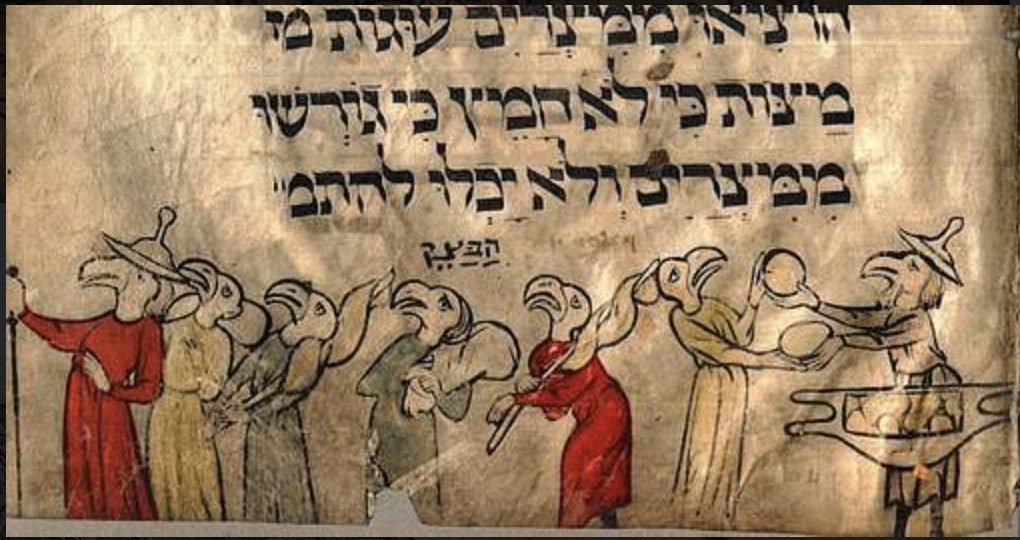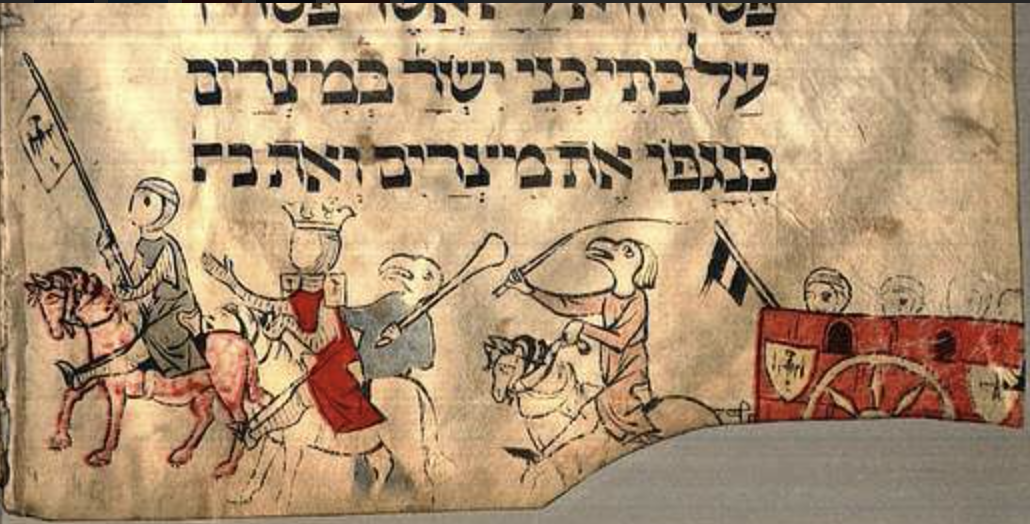Torah Study Date
Saturday, September 23, 2023
Verses Covered
Exodus (Sh’mot) 12:34-12:44
Next Session
Saturday, September 30, 2023
Starting at Exodus 12:45
Last week, Rabbi Sara reminded us that the Pesach sacrifice and meal is the first actual practice the Israelites are given and that they don’t even have Shabbat yet. God, she continued, is giving them something positive that is from their own culture–their lamb, their matza–and giving it meaning. She mentioned, regarding the bowls with unrisen dough that they took with them, that bowls are vital (think of your favorite cast iron pan) and hard to make. We discussed the Israelites taking with them the gold and silver items they took from the Egyptians. Rabbi Sara pointed out that the Mishkan (tabernacle) that they make for themselves later is made out of the gold and silver they had taken–as is the golden calf. We noted that the Israelites plundered or despoiled Egypt.
We discussed “from Rameses to Sukkot” and noted that the Hebrew is “sukkotah” because the directional “he” is added to “sukkot” so that the meaning is “to Sukkot.” We noted that the group is called an “erev rav” (great mixture) meaning that it was all kinds of people. We noted that the word “kavod” (heavy) is used of the livestock to mean a lot of livestock or many livestock and that the word “kavod” in recent passages has been applied to Pharaoh’s heavy oppression and to the weight of the plagues but here is used for something good (as if to say, after all the heavy oppression, now the Israelites are heavy with possessions!). We discussed the dough they carried with them and whether it had been leavened but had not had time to rise or simply had not been leavened (not clear).
We began discussing YHVH telling Moses and Aaron that only Israelites, and not foreigners, were to eat from the paschal animal although circumcised slaves should be allowed to eat from it.
Our artwork this week is from the Birds’ Head Haggadah (c. 1300, Upper Rhine, Germany), Escape from Egypt 1 (above), and Escape from Egypt 2 (below). It is the oldest surviving Ashkenazi illuminated manuscript. In it, Israelites are portrayed with birds’ heads and others, such as the Egyptians (below), are portrayed with blank faces (it is not clear to scholars why they are portrayed in this fashion). In addition, Israelites are shown wearing the type of cone-shaped hats that were required of them in Europe at the time the haggadah was created. Above, the Israelites are making dough and carrying it away over their shoulders as they escape and below they are being chased by Egyptians on horseback including Pharaoh, portrayed as a crowned king, and his army.


